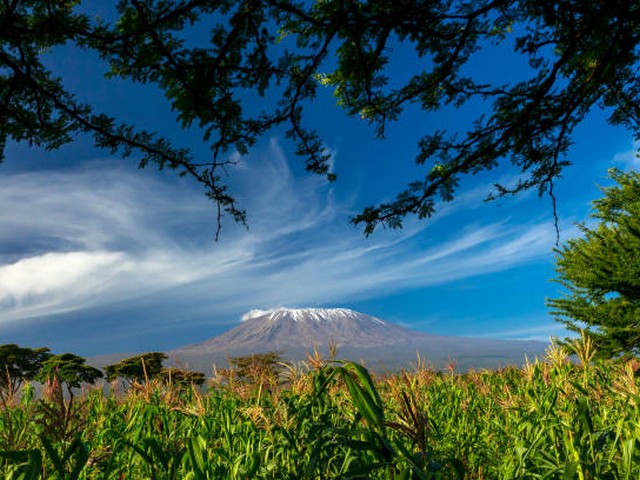Kilimanjaro Summit Night Gear Checklist: Essential Tips for a Successful Climb
Scaling Mount Kilimanjaro, the highest peak in Africa, is a dream for many adventurers around the world. The summit night is particularly challenging and thrilling, requiring not only physical strength and mental resilience but also the right gear to conquer the 5,895 meters (19,341 feet) to the top. At the Kilimanjaro Centre for Trekking and Ecotourism (KCTE), we understand the importance of proper preparation. In this blog post, we will guide you through an essential "Kilimanjaro Summit Night Gear Checklist" to ensure you are well-equipped for your journey to the roof of Africa.
Why the Right Gear Matters
The final ascent to Uhuru Peak is no ordinary hike. Climbers face extreme cold, varying weather conditions, and the challenge of high altitude. Having the right gear can make the difference between a successful, memorable experience and a physically uncomfortable, potentially risky climb. Our goal at KCTE is to help every climber be fully prepared and safe, focusing on a successful summit.
Essential Gear for Kilimanjaro Summit Night
Thermal Base Layers
Starting with the basics, thermal base layers are crucial. These layers trap body heat and are essential because temperatures on summit night can drop below freezing. Opt for moisture-wicking materials like merino wool or synthetic fibers to keep you dry and warm.
Insulation Layer
Over your base layer, you will need an insulation layer, typically a fleece or a lightweight down jacket. This layer should offer warmth without adding excessive bulk, allowing for ease of movement.
Outer Shell
The third layer is your defense against the elements. A high-quality, waterproof, and windproof jacket and pants are vital. Conditions on Kilimanjaro can change swiftly, and protecting yourself from wind and moisture is crucial.
Head and Hand Protection
Do not overlook protecting your extremities. A warm, insulated beanie or a balaclava will help prevent heat loss from your head, while quality gloves (preferably water-resistant) are necessary to avoid frostbite and keep your hands functional for gripping.
Footwear
Invest in a good pair of insulated, waterproof mountaineering boots. Your boots should be well broken-in to prevent blisters and promote comfort. Paired with thermal socks, your feet will stand a better chance against the cold and rugged terrain.
Eye Protection
High-altitude UV rays can be harmful to your eyes. Protect them with UV-blocking sunglasses or glacier glasses. Goggles are also recommended, as they can be crucial if you encounter strong winds or snow.
Illumination
Headlamps are essential for summit night, as the climb typically commences around midnight. Ensure your headlamp has a strong beam and bring extra batteries, as cold conditions can drain battery life quickly.
Hydration and Nutrition
Hydration systems might freeze on summit night, so insulated water bottles are recommended. Keep them inside your jacket to prevent freezing. Snacks like energy bars, nuts, or chocolate should be accessible easily and consumed regularly to maintain energy levels.
Backpack
A sturdy, yet lightweight backpack is essential to carry your supplies. Make sure it has comfortable straps and a waist belt to distribute the load evenly. Pack essential items where you can reach them easily without having to stop and unpack.
Preparing for the Climb with KCTE
Preparing for your Kilimanjaro climb with the Kilimanjaro Centre for Trekking and Ecotourism (KCTE) ensures that you not only have the perfect gear list but also the guidance and support of experienced professionals. Our expert guides and porters are here to help you every step of the way, from gear checks to providing insights and encouragement during your climb.
FAQs on Kilimanjaro Summit Gear
What should I wear on my legs during the summit night?
Opt for thermal leggings as your base layer, and add a pair of insulated trekking pants over them. It’s advisable to have waterproof shell pants ready in your pack, which you can layer on if conditions demand.
How can I prevent my water from freezing?
Use insulated water bottles and keep them close to your body, inside your jacket. Additionally, chemical heat packs can be used to keep water at a drinkable temperature.
Can I rent gear for my Kilimanjaro climb?
Yes, KCTE offers high-quality gear rental for climbers. This includes everything from clothing to technical equipment, ensuring you are fully equipped without the burden of purchasing and transporting your gear.
How important are trekking poles for summit night?
Trekking poles are highly recommended as they help balance and reduce strain on your legs and knees, especially during the descent. Make sure they are adjustable and have comfortable grips.
Conclusion: Ready for the Roof of Africa
Equipped with the right gear and support from KCTE, you’re now ready to face the challenge of Kilimanjaro’s summit night. Remember, proper preparation is key to making your climbing experience safe and enjoyable. We invite you to book your Kilimanjaro adventure with us at the Kilimanjaro Centre for Trekking and Ecotourism, where your dream of reaching the summit becomes our mission. Climb with confidence, reach new heights, and create memories that will last a lifetime. Join us on the journey to the top of Africa!
Embark on your Kilimanjaro adventure with KCTE. Visit our website or contact us directly to learn more about our tailored climbing packages and start planning your summit story today!




